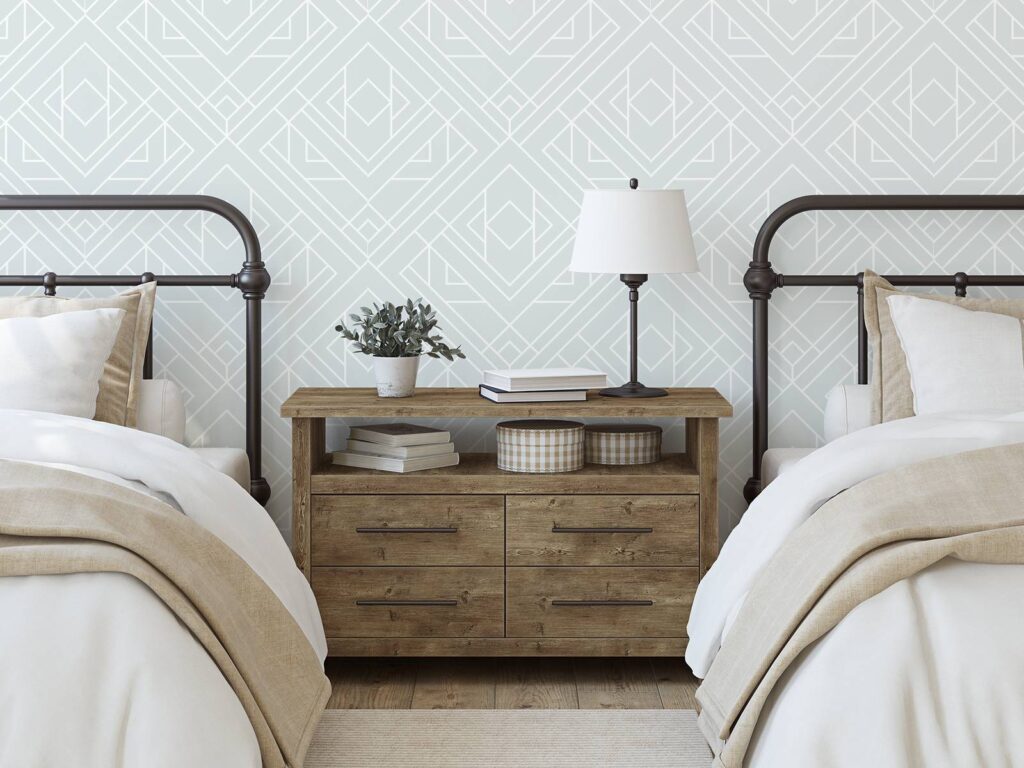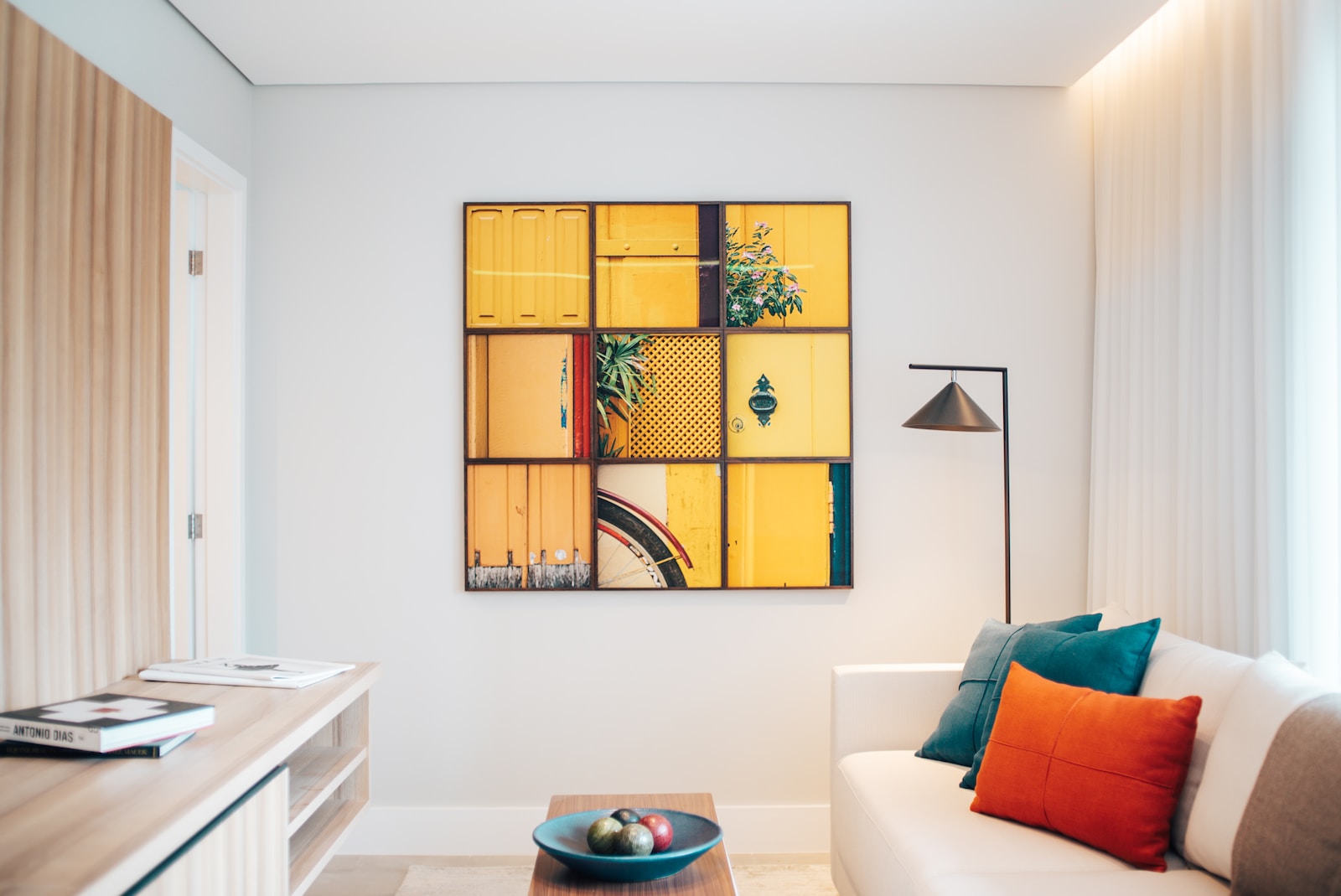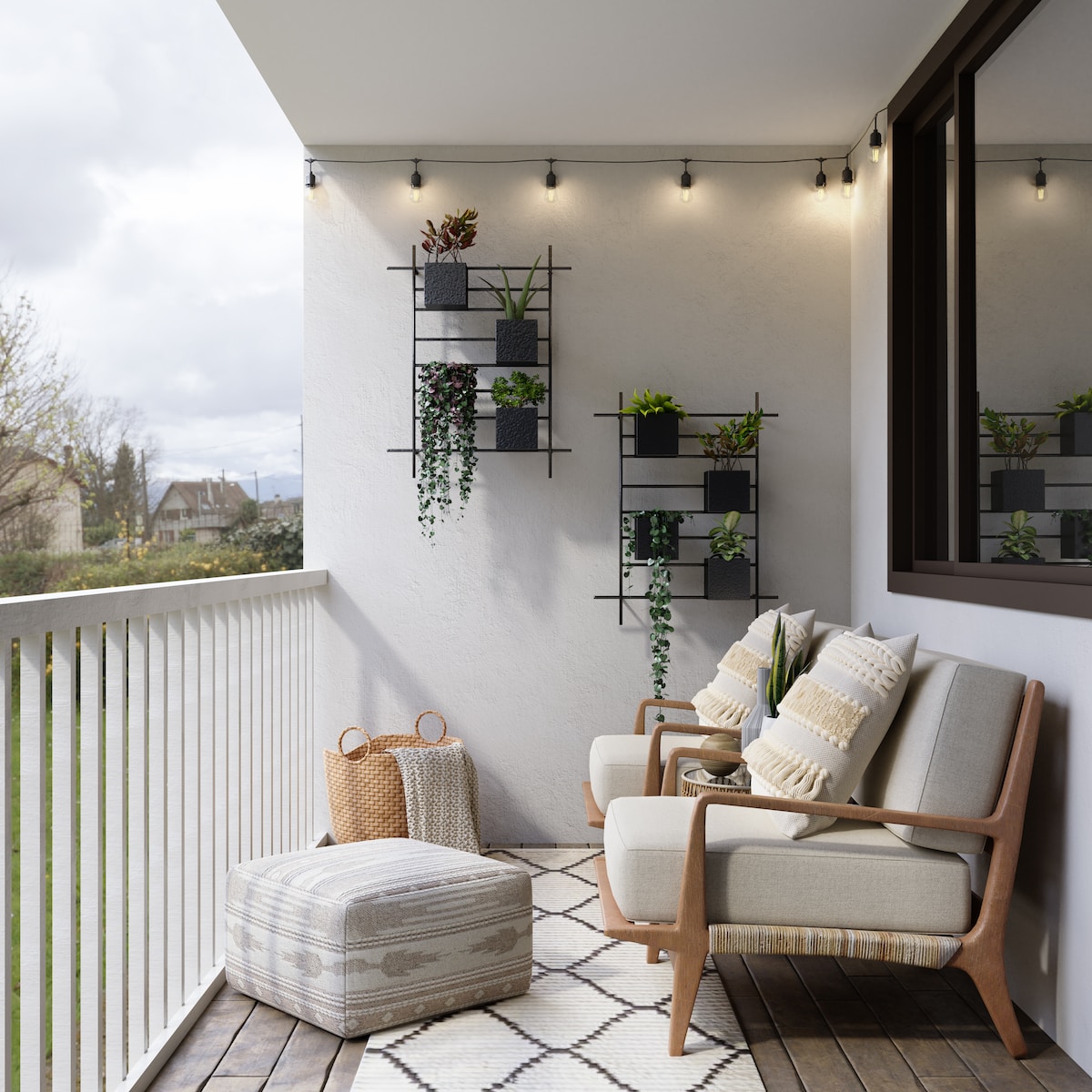Designing an interior space is a form of artistry, and like any art form, it thrives on creativity and expression. Mixing patterns is an exciting way to infuse character and personality into your home decor. Combining geometrical wallpaper patterns with others can add depth and visual interest to your space when done right. See how to explore the art of mixing patterns, focusing on harmoniously integrating wallpaper and textiles for a cohesive and captivating interior design.

Understanding Pattern Basics
Before diving into the world of pattern mixing, it’s essential to grasp some fundamental concepts:
- Scale: Patterns come in various scales, from large to small. Balancing different scales is crucial for an aesthetically pleasing result.
- Color Palette: A cohesive color palette is critical. Patterns that share similar colors are more likely to work well together.
- Texture: Mixing patterned textiles with different textures can add depth and complexity to your design.
- Contrast: Contrast is essential to make patterns stand out. Mixing patterns of varying levels of contrast can create visual interest.
Now, let’s delve into the art of combining wallpaper and textiles to achieve a cohesive look.
Start with a Focal Point
Begin by selecting a focal point for your room, a wallpapered wall, or a prominent piece of furniture with a patterned textile. This focal point will set the tone for the entire space.
Mix Scales
To avoid overwhelming the space, mix patterns of different scales. If your wallpaper features a large, bold pattern, pair it with textiles with smaller or subtler patterns. Conversely, if your wallpaper is more subdued, opt for larger patterns or more daring materials to create contrast and balance.
Coordinate Colors
Create a cohesive look by coordinating colors between your wallpaper and textiles. Pull out accent colors from your wallpaper and use them in your materials. This connection between elements will tie the room together. If you are having trouble finding the colors that you need, you can opt for a custom wallpaper from a company like Love Vs. Design that offers fully customizable colors in order to create the perfect color contrast for your home.
Embrace Variety
Variety is the spice of life when it comes to mixing patterns. Experiment with different types of patterns, such as florals, stripes, geometrics, and solids. The key is to strike a balance between busy and calming elements.
Use Neutrals as Anchors
Neutral colors like whites, grays, and creams can be visual anchors in a patterned space. Incorporate neutral elements through furniture, area rugs, or solid-colored textiles to provide balance.
Play with Textures
Textures can add a certain depth and interest to a room filled with patterns. Mix textured textiles, like faux fur or knitted throws, with patterned elements to create a visually rich and inviting space.
Test with Samples
Before committing to a full-scale pattern mix, experiment with samples. Try different combinations of wallpaper and textiles to see how they interact in your space. This step can help you refine your design and ensure harmony.
Create Flow
Maintain a sense of flow in your space by allowing patterns to guide the eye from one area to another. For instance, if you have patterned curtains in the living room, carry a similar design or color into the adjacent dining area through a table runner or seat cushions.
Less is More
While pattern mixing can be exciting, doing just what is necessary is essential. Sometimes, a few well-chosen patterned elements have a more significant impact than an abundance of patterns. Balance is key.
Trust Your Instincts
Ultimately, trust your instincts and personal style when mixing patterns. Design is a form of self-expression, and your space should reflect your unique tastes and preferences.
Mastering the art of mixing patterns can elevate your interior design, especially when combining wallpaper and textiles. By understanding the principles of scale, color coordination, texture, and contrast, you can create a cohesive and visually captivating living space that reflects your personality and creativity. So, don’t be afraid to experiment, trust your instincts, and let your unique style shine through the patterns you choose for your home.



